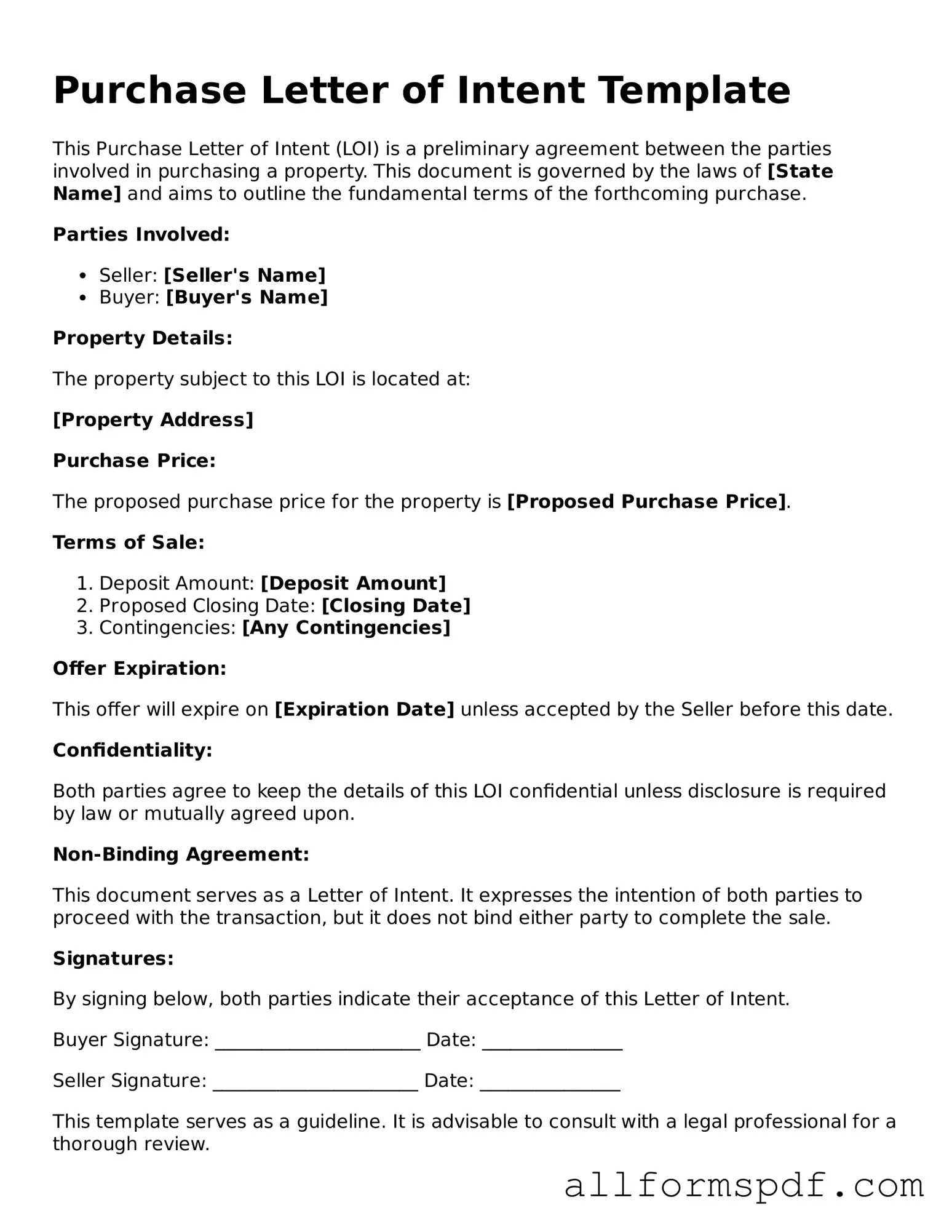Printable Purchase Letter of Intent Form
A Purchase Letter of Intent (LOI) is a preliminary agreement that outlines the intentions of a buyer and seller to engage in a transaction. This document serves as a foundation for negotiations, detailing key terms and conditions before a formal contract is drafted. Understanding the components of a Purchase LOI can streamline the purchasing process and set clear expectations for both parties.
Create My Purchase Letter of Intent Now
